PDF of this article (281 KB)
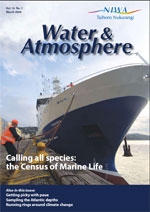


In Auckland last November, researchers from around the globe gathered to compare notes on a scientific programme as ambitious as the Domesday Book was in its day. Mireille Consalvey writes about New Zealand’s part in a unique experiment.
One of the six most important experiments in the world.” That’s how Discover magazine has described the Census of Marine Life (CoML). Simple in concept but challenging in its enormity, the aim of the Census is to assess and explain the diversity, distribution, and abundance of marine life in the oceans – past, present, and future.
So far nearly 2000 researchers from 80 nations have logged more than 80 000 species; and with the inclusion of 5300 previously unrecorded organisms, this is no ordinary census. NIWA participant Dennis Gordon describes the $650 million decade-long Census as “quite simply the most comprehensive research programme on ocean biology that has ever been undertaken”. Funding from the New York-based Sloan Foundation supports the programme, either directly or by facilitating involvement through various research partnerships.
With the oceans making up around 70% of the world’s surface, one of the first tasks for CoML researchers was to divide the ocean into various realms in which the 14 field projects fall, from seashore to abyssal trench, and encompassing polar regions, tropical reefs, and a range of ecosystems including planktonic and microbial.
The November 2007 meeting of Census of Marine Life All Programmes was the last full gathering before the 2010 grand finale in London. About 200 leaders of the Census projects attended the five-day meeting, jointly hosted by NIWA and the University of Auckland. The New Zealand location was no coincidence: as an oceanic nation with a strong involvement in Census programmes, New Zealand is a vital piece of the Census puzzle.
CoML projects in New Zealand
CenSeam – NIWA hosts the secretariat of CenSeam, a global census of marine life on seamounts, or undersea mountains, which are found throughout the world’s oceans. Malcolm Clark, one of the founders of CenSeam, tells us that “very little is known of what actually lives on seamounts – only 300–400 have been sampled out of a possible global total close to 100 000. We need to learn more about the animals found on seamounts, how the communities are structured, how they function, and how humans can affect them, so that seamount resources can be managed in a sustainable way and biodiversity maintained”. Through uniting researchers from around the world, CenSeam is increasing our understanding of seamount ecosystems, with ongoing research in New Zealand being a crucial part of the global effort.

ChEss and COMARGE – Census researchers have identified New Zealand as a high-priority region to advance our understanding of continental margins and chemosynthetic ecosystems, which include hydrothermal vents, cold seeps, ‘whale falls’ (whale carcasses on the seafloor), and sunken wood. In 2006, working aboard NIWA’s research vessel Tangaroa, scientists from the ChEss (Chemosynthetic Ecosystems) and COMARGE (Continental Margin Ecosystems) projects directly observed communities of animals and microbes living in chemosynthetic habitats in New Zealand waters, providing the first discovery of cold-seep communities in the southwest Pacific.

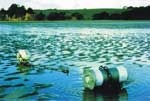
CAML – New Zealand researchers are also active participants in the Census of Antarctic Marine Life effort for the International Polar Year. Researchers are currently aboard Tangaroa in the Ross Sea studying the mega (for example, marine mammals) to not-so-mega (microscopic) organisms that call this region home, collecting samples from sea surface to seafloor, and covering a wide range of environmental and geographic gradients.
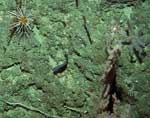
HMAP and FMAP – Every voyage that sails provides a snapshot of life at that time, but CoML goes beyond this, delving into the past and looking into the future. Two additional projects – History of Marine Animal Populations and Future of Marine Animal Populations – are an integral part of the Census story. Humans have been modifying sea margins for tens of millennia; researchersmust disentangle natural climatic variations from human impacts. Isolated in the southwest Pacific, New Zealand was the last major land mass to be settled by humans and therefore provides a unique opportunity to examine both the effects of climate variation and the human impacts on a large pristine marine ecosystem over the past millennium.
Taking Stock, the New Zealand HMAP effort coordinated by Alison MacDiarmid of NIWA, charts the impacts of a succession of human arrivals. The project begins with Polynesian settlers around 1300, followed by European sealers in the 1790s, whalers by 1805, the first European settlers in 1820, and so on to the present.
There is no sure way of knowing what will live in ouroceans in the future, but using current and historical data to provide a baseline, scientists can use statistical and analytical tools to predict how marine-animal populations may change in the future.
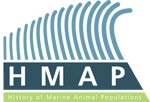

OBIS – A major legacy of the Census will be the Ocean Biogeographic Information System. This online repository for fieldproject and other marine data already contains almost 14 million records. NIWA is a regional centre for OBIS.
The rate of discovery of new species is limited by the time scientists have to describe them. In New Zealand, 16 086 species can be accounted for, yet it is thought that more than 40 000−50 000 are still to be described. Dennis Gordon estimates that at the present rate of new species descriptions it will take 400−500 years to complete the task of inventorying New Zealand’s marine biota.
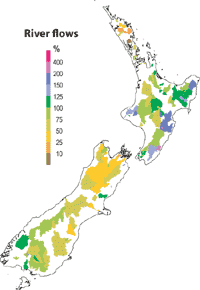
Strengthening the foundation
Knowledge is the foundation for the future of our planet’s oceans. With the Census of Marine Life providing new technology, scientific information, predictive models, and a greater understanding of marine life, it can only serve to advance future research. The Census of Marine Life could indeed be one of the most important scientific accomplishments of the decade.
Calling all species
- NIWA and the University of Auckland have hosted an international gathering of scientists intent on creating the definitive record of global marine biodiversity.
- New Zealand researchers are participating in a variety of component projects within the larger Census of Marine Life programme.
- New Zealand projects range from our shores to Antarctica, and from the distant past into the future.
Useful links and further reading
CoML - Census of Marine Life: www.coml.org
CenSeam - Census of marine life on Seamounts: censeam.niwa.co.nz
ChEss - Chemosynthetic Ecosystems: www.noc.soton.ac.uk/chess
COMARGE - Continental Margin Ecosystems: www.ifremer.fr/comarge/en
HMAP - History of Marine Animal Populations: www.hmapcoml.org
FMAP - Future of Marine Animal Populations: www.fmap.ca
OBIS - Ocean Biogeographic Information System: www.iobis.org
CAML - Census of Antarctic Marine Life: www.caml.aq
The New Zealand CAML project is a major collaboration between Land Information New Zealand (LINZ), Ministry of Fisheries, Ministry of Foreign Affairs and Trade, Antarctica New Zealand, Te Papa, NIWA, and New Zealand universities. To follow the Southern Ocean voyage, go to: www.niwascience.co.nz/rc/antarctica/ipy-caml
IPY - International Polar Year: www.ipy.org
Barone, J. (2007). The Census of Marine Life in The 6 most important experiments in the world: discovermagazine.com/2007/dec/the-6-most-important-experiments-in-the-world
Consalvey, M. (2006). CenSeam: a global census of marine life on seamounts. Water & Atmosphere 14(1): 9.
Consalvey, M. (2006). The DAWG gets down to business. Water & Atmosphere 14(2): 7.
Grieve, J. (2008). Sampling the Atlantic depths. Water & Atmosphere 16(1): 14–15.
Tracey, D. (2008). Studying sea anemones and black corals at NIWA. Water & Atmosphere 16(1): 7.
Dr Mireille Consalvey is based at NIWA in Wellington. She is a specialist in seamount ecology and coordinates the CenSeam programme.
Teachers’ resource for NCEA Achievement Standards or Unit Standards: Biology Level 1 AS90162
